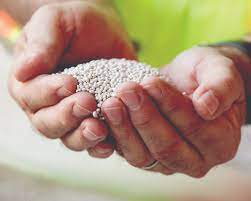‚ROADMAP‘ FOR NEW NUTRIENT SOURCES FOR ORGANIC FARMING —- Final report from EU-funded H2020 project RELACS on recycled nutrient products for organic farming shows little progress, makes no recommendations for action, proposes further discussion and research. The report is based on 5 national workshops with organic farmers and advisors, scientists and national authorities, and a European concluding workshop. The report underlines the organic farming objective of feeding plants through the soil ecosystem. Manures from non-organic farms and rock phosphates are considered the most problematic external plant nutrition inputs to organic farming, because of contaminants and consumption of non-renewable resources. The report concludes that the importance of nutrient supply to organic farming has been underestimated to date, with risks of soil nutrient depletion and of reduced productivity. The report proposes to develop the recycling of societal waste streams in order to ensure the nutrient supply of organic farming. As a first step, the RELACS project assessed three recycled nutrient materials only: AshDec calcined phosphates from sewage sludge incineration ash, Ostara struvite from municipal wastewater and anaerobic digestate. The report concludes from the workshops that the acceptance by organic farmers of the three products considered is generally good, also indicates concern about microplastics and organic residues in calcined phosphates. This shows that better information of Organic farmers and stakeholders is needed, in that this is not pertinent for a product is derived from sewage sludge incineration ash.
RECYCLING PHOSPHORUS (P) FROM FISH PROCESSING WASTE TO FISH FEED —- Fish bone meal and dicalcium phosphate (DCP) extracted from fish bones showed to be effective P sources in aquaculture fish feed, the study ‘Optimization of Phosphate Recovery from Monkfish, Lophius Vomerinus, Processing By-Products and Characterization of the Phosphate Phases’ concluded. Trials were carried out in heated, recirculating aquaculture production of African Catfish, comparing feeds including P recovered from fish processing wastes to commercial DCP. The recycled P materials were produced from fish heads from a local Monkfish processing company in South Africa. The heads were treated by enzymatic protein hydrolysis, then rinsed, to leave cleaned bones. Fish bone meal was produced by drying @ 50°C then grinding. Recovered DCP was produced by leaching with 1M phosphoric acid then DCP precipitation by adding lime. The trials showed good fish growth with both recovered and commercial P in feed, with no significant differences in fish growth, feed conversion rate, body condition. The authors conclude that these phosphate materials recovered from fish processing wastes are a viable replacement for commercial dicalcium phosphate in aquaculture feed.
P IS THE MOST WIDELY LIMITING NUTRIENT ON LAND —- Global modeling suggests that 43% of land area is naturally limited by phosphorus, compared to only 18% by nitrogen, with the remainder co-limited by both nutrients or only weakly nutrient limited, according to the study entitled ‘Global Patterns of Terrestrial Nitrogen and Phosphorus Limitation’. Phosphorus is already recognized as the limiting nutrient in nearly all freshwater systems (lakes, rivers, reservoirs), which is why even limited phosphorus losses from land to water can cause eutrophication problems (algal growth). This study confirms the importance of P limitation for terrestrial ecosystems, and so its implications for potential to limit carbon uptake in response to elevated atmospheric carbon dioxide. The model is based on eleven predictors, covering local climate, soil and vegetation factors. Results show good correlation to published field data. Nitrogen tends to be more limiting at higher latitudes and altitudes. Phosphorus is limiting in general in tropical, subtropical and temperature deciduous forests, Mediterranean biomes, tropical and temperate grasslands, savannas and shrubland. The authors note that climate warming may favor biological nitrogen fixation, so mitigating nitrogen limitation and increasing areas concerned by phosphorus limitation.




